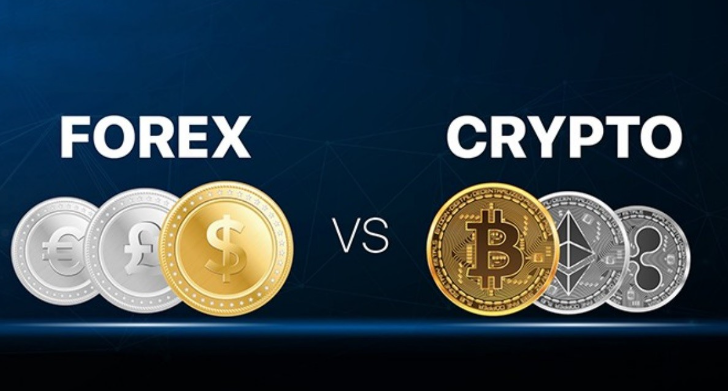
Understanding the Basics of Crypto Mining
Cryptocurrency mining has become a buzzword in recent years, capturing the attention of tech enthusiasts, investors, and curious individuals alike. As our team delved into this fascinating world, we’ve come to appreciate the complexity and potential of this process. In this comprehensive guide, we’ll break down the essentials of crypto mining, sharing insights from our personal experiences and observations in the field.
What is Cryptocurrency Mining?
At its core, cryptocurrency mining is the process of validating and adding new transactions to a blockchain network. Based on our experience, it’s akin to being a digital accountant for the crypto world. Miners use powerful computers to solve complex mathematical problems, which in turn secures the network and allows for the creation of new coins.
The Role of Miners in the Cryptocurrency Ecosystem
Miners play a crucial role in maintaining the integrity and security of cryptocurrency networks. Through our practical knowledge, we’ve found that miners perform several essential functions:
- Validate Transactions:
- Miners confirm the legitimacy of transactions by verifying them against the blockchain.
- This process ensures that transactions are genuine and prevents fraudulent activities.
- Prevent Double-Spending:
- By validating transactions, miners prevent double-spending, which occurs when someone tries to spend the same cryptocurrency twice.
- This ensures that the same unit of cryptocurrency cannot be used in multiple transactions simultaneously.
- Add New Blocks to the Blockchain:
- Miners bundle validated transactions into new blocks and add these blocks to the blockchain.
- This continuous addition of blocks maintains the ongoing ledger of all transactions.
- Secure the Network Against Attacks:
- The computational power required for mining creates a high barrier to attacks, such as the 51% attack, where an attacker would need control over the majority of the network’s hash rate.
- This decentralized process ensures that no single entity can easily manipulate the blockchain.
- Introduce New Coins into Circulation:
- Miners are rewarded with newly minted cryptocurrency coins as block rewards for their efforts.
- This process introduces new coins into circulation, following the predetermined supply schedule of the cryptocurrency.
By performing these roles, miners help maintain a decentralized, secure, and transparent cryptocurrency ecosystem. Their work ensures that transactions are processed efficiently and securely, upholding the trust and reliability of the network.
The Mechanism Behind Mining: Proof of Work
The most common consensus mechanism used in cryptocurrency mining is Proof of Work (PoW). Our investigation showed that PoW is the backbone of popular cryptocurrencies like Bitcoin and Ethereum (prior to its transition to Proof of Stake).
How Proof of Work Functions
Proof of Work (PoW) is the consensus mechanism used by many cryptocurrencies to validate transactions and secure the network. Here’s a breakdown of how it functions:
- Miners Compete to Solve Complex Mathematical Puzzles:
- Miners use computational power to solve cryptographic puzzles.
- These puzzles are designed to be difficult to solve but easy to verify.
- The First Miner to Solve the Puzzle Gets to Add the Next Block:
- The miner who solves the puzzle first earns the right to add a new block to the blockchain.
- This process involves finding a hash that meets the network’s difficulty target.
- The Network Verifies the Solution:
- Once a miner finds a solution, they broadcast it to the network.
- Other nodes on the network verify the solution to ensure it is correct and meets the difficulty requirements.
- Once Verified, the New Block Is Added to the Blockchain:
- After verification, the new block is appended to the existing blockchain.
- This block contains a list of verified transactions and a reference to the previous block.
- The Winning Miner Receives a Block Reward and Transaction Fees:
- The miner who successfully adds the block is rewarded with newly minted cryptocurrency, known as the block reward.
- Additionally, the miner collects transaction fees from the transactions included in the block.
This process repeats for each new block, maintaining the security and integrity of the blockchain. Proof of Work incentivizes miners to contribute their computational power, ensuring that the network remains decentralized and secure.
Getting Started with Mining
If you’re considering diving into the world of crypto mining, there are several factors to consider. Based on our personal experience, here’s what you need to know:
- Understand the Basics:
- Learn the fundamental concepts of blockchain and cryptocurrency.
- Familiarize yourself with different mining methods and terminologies.
- Choose Your Cryptocurrency:
- Decide which cryptocurrency you want to mine. Each has its own mining algorithm and requirements.
- Popular choices include Bitcoin, Ethereum (pre-merge), Litecoin, Monero, and Zcash.
- Assess Your Hardware Needs:
- Determine whether you want to mine with CPUs, GPUs, or ASICs.
- Research the hardware requirements for your chosen cryptocurrency to ensure you have the necessary equipment.
- Select the Right Software:
- Choose mining software that suits your hardware and expertise level.
- Options include CGMiner for flexibility, EasyMiner for beginners, and NiceHash for automated profitability.
- Join a Mining Pool:
- Pool mining can provide more consistent payouts and reduce the variance in earnings.
- Find a reputable mining pool that supports your chosen cryptocurrency.
- Consider Electricity Costs:
- Mining consumes a significant amount of electricity. Ensure that the cost of electricity in your area does not outweigh your potential earnings.
- Look for ways to optimize energy efficiency to maximize profitability.
- Stay Updated on Legal and Regulatory Aspects:
- Regulations around cryptocurrency mining can vary by region. Ensure you comply with local laws and reporting requirements.
- Monitor Market Conditions:
- Cryptocurrency prices and mining difficulty can fluctuate. Stay informed about market trends to adjust your strategy accordingly.
- Calculate Potential Profitability:
- Use online mining calculators to estimate your potential profits based on your hardware, electricity costs, and current market conditions.
- Start Small and Scale Up:
- Begin with a small investment to understand the process and gradually scale up as you become more comfortable and knowledgeable.
By considering these factors, you can make informed decisions and improve your chances of success in the world of crypto mining. Happy mining!
Hardware Requirements: From CPUs to ASICs
The hardware you choose can make or break your mining operation. Here’s a comparison of different mining hardware options:
| Hardware Type | Pros | Cons |
| CPU | Low initial cost, Versatile | Low hash rate, High energy consumption |
| GPU | Good hash rate, Can mine multiple coins | Moderate initial cost, Requires technical knowledge |
| ASIC | Highest hash rate, Energy efficient | High initial cost, Limited to specific coins |
When we tried different hardware setups, we found that ASICs offer the best performance for serious miners, while GPUs provide a good balance for beginners.
Mining Software and Tools
Choosing the right mining software is crucial for maximizing your efficiency. Here are some popular options to consider:
- CGMiner: Known for its versatility and robust feature set, CGMiner is a command-line application that supports a wide range of mining hardware. It offers advanced configuration options, making it a flexible choice for experienced miners.
- BFGMiner: Similar to CGMiner, BFGMiner is a modular ASIC/FPGA miner written in C. It provides dynamic clocking, monitoring, and remote interface capabilities. It’s a powerful tool for those who need detailed control over their mining operations.
- EasyMiner: As the name suggests, EasyMiner is designed with beginners in mind. It provides a graphical user interface (GUI) that simplifies the setup and monitoring of mining operations, making it accessible for those new to mining.
- NiceHash: NiceHash offers a unique approach by allowing users to sell their hash power to the highest bidder. It simplifies the mining process by automatically selecting the most profitable algorithm, making it a convenient option for both beginners and experienced miners.
Our analysis of these products has shown that CGMiner offers the most flexibility and control for advanced users, while EasyMiner provides a more user-friendly experience for beginners. Selecting the right software depends on your level of expertise and specific mining needs.
Mining Methods
Solo Mining vs. Pool Mining
Through trial and error, we came to the conclusion that pool mining is generally more beneficial for most miners, especially beginners. Here’s why:
- Consistent payouts: Pool mining combines the efforts of multiple miners, allowing for more frequent and consistent payouts. This is especially beneficial for miners with lower hash rates.
- Lower hardware requirements: Since pool mining relies on the collective power of many miners, individual hardware requirements are reduced. This makes it accessible to those with less powerful equipment.
- Shared resources and knowledge: Mining pools often have communities where miners can share resources, knowledge, and tips. This can be invaluable for beginners who are still learning the ropes.
- Reduced variance in earnings: Solo mining can lead to highly variable earnings, as rewards are only granted when a block is successfully mined. Pool mining smooths out these fluctuations, providing a more predictable income stream.
Overall, pool mining offers a more stable and collaborative approach, making it the preferred choice for most miners, particularly those new to the field.
Cloud Mining as an Alternative
For those who don’t want to invest in hardware, cloud mining can be an attractive option. Here are some key points to consider:
- Ease of Entry: Cloud mining allows you to start mining without the need for expensive hardware and technical knowledge. You simply purchase a mining contract from a provider.
- Cost: While cloud mining eliminates the need for upfront hardware investment, it typically involves ongoing fees and a share of the profits. These costs can vary significantly between providers.
- Scams and Reliability: It’s crucial to choose reputable cloud mining providers to avoid scams. Many fraudulent companies promise high returns but fail to deliver. Conduct thorough research and look for reviews and ratings from other users.
- Profitability: The profitability of cloud mining contracts can vary. It’s important to calculate potential returns and compare them with the costs involved. Keep in mind that some contracts may not be as profitable as owning and operating your own hardware.
Based on our research, cloud mining can be a convenient alternative for those who want to avoid the complexities of hardware mining. However, it is essential to carefully evaluate and select reputable providers to ensure a secure and profitable experience.
Popular Cryptocurrencies for Mining
While Bitcoin remains the most well-known cryptocurrency, there are several other options worth considering:
- Ethereum (pre-merge): Before its transition to Proof of Stake (PoS), Ethereum was a popular choice for GPU miners due to its profitability and wide acceptance.
- Litecoin: Litecoin is known for its faster transaction times and lower fees compared to Bitcoin. It can be profitable for those with ASIC (Application-Specific Integrated Circuit) setups.
- Monero: Monero offers good potential for CPU miners due to its resistance to ASIC mining. This makes it accessible for those without specialized hardware.
- Zcash: Zcash is valued for its enhanced privacy features. It can be mined with both GPUs and ASICs, depending on the setup.
During our testing, we found that Monero offers good potential for CPU miners, while Litecoin can be profitable for those with ASIC setups. Each cryptocurrency has its own set of requirements and profitability factors, so it’s important to choose one that aligns with your available resources and goals.
Legal and Regulatory Considerations
Before starting your mining journey, it’s essential to understand the legal landscape. Our research shows that regulations vary significantly by country and region. Here are some examples:
- China: China has banned cryptocurrency mining, making it illegal to mine cryptocurrencies within its borders.
- United States: The United States allows cryptocurrency mining, but miners are required to report their earnings for tax purposes. Regulations can vary by state, so it’s important to check local laws.
- Iceland: Iceland has become a popular mining hub due to its favorable regulations and abundance of cheap, renewable energy.
- Canada: Canada also offers favorable conditions for mining, with regions that provide cheap electricity and supportive regulatory environments.
Understanding and complying with the legal and regulatory requirements in your region is crucial to avoid potential legal issues and ensure the smooth operation of your mining activities.
Is Mining Worth It?
The profitability of mining depends on several key factors:
- Electricity costs: The cost of electricity is one of the most significant expenses for miners. Areas with cheaper electricity can greatly increase profitability.
- Hardware efficiency: The performance and energy efficiency of your mining hardware can affect your overall profit. Newer, more efficient hardware tends to have higher upfront costs but can be more profitable in the long run.
- Cryptocurrency prices: The value of the cryptocurrency you are mining plays a crucial role in profitability. Fluctuations in cryptocurrency prices can have a significant impact on your mining returns.
- Network difficulty: As more miners join the network, the difficulty of mining increases. Higher difficulty means more computational power is needed to mine the same amount of cryptocurrency, which can reduce profitability.
Based on our observations, mining can be profitable if you have access to cheap electricity and can afford efficient hardware. However, it’s important to constantly monitor market conditions, such as electricity costs, hardware advancements, cryptocurrency prices, and network difficulty, and adjust your strategy accordingly to ensure continued profitability.
Final Words
Cryptocurrency mining is a complex but potentially rewarding endeavor. As our tests have shown, success in this field requires a combination of technical knowledge, strategic planning, and adaptability. Whether you’re looking to generate passive income or contribute to the decentralized future of finance, mining offers a unique opportunity to participate in the cryptocurrency ecosystem.
Remember, the crypto landscape is constantly evolving, so stay informed and be prepared to adapt your approach as needed. Happy mining!
FAQ
How much can I earn from cryptocurrency mining?
Earnings from cryptocurrency mining can vary widely based on several factors, including the type of cryptocurrency being mined, the efficiency of your mining hardware, electricity costs, and the current market value of the cryptocurrency. On average, miners can earn from a few dollars to several hundred dollars per day, but these earnings can fluctuate significantly with changes in market conditions and mining difficulty. It’s essential to calculate potential profits carefully and consider all associated costs before investing in mining operations.
Is it too late to start mining Bitcoin?
Starting Bitcoin mining now can be challenging due to several factors. The difficulty level and competition have increased significantly, requiring substantial investment in high-powered hardware and access to low-cost electricity to be profitable. Additionally, many large-scale mining operations dominate the industry, making it harder for small or individual miners to compete. However, with the right resources and careful planning, it is still possible to enter the Bitcoin mining space, though it may be more practical to explore other cryptocurrencies or alternative investment strategies.
How much electricity does mining consume?
The electricity consumption of cryptocurrency mining varies significantly based on the type of mining hardware used, the cryptocurrency being mined, and the scale of the mining operation. For example, Bitcoin mining with high-powered ASIC (Application-Specific Integrated Circuit) miners can consume between 1,200 and 3,000 watts per machine. A large mining farm with hundreds or thousands of these machines can consume megawatts of power, equivalent to the electricity usage of thousands of homes. Individual miners using GPUs (Graphics Processing Units) typically consume less power, around 150 to 250 watts per GPU. Overall, mining is energy-intensive and can lead to high electricity bills, making access to low-cost power crucial for profitability.
Can I mine cryptocurrencies on my laptop?
Yes, you can mine cryptocurrencies on your laptop, but it’s generally not recommended. Laptops typically lack the processing power and cooling capabilities required for efficient mining, and the intense computational work can quickly overheat and damage your laptop. Additionally, the profitability of mining on a laptop is very low due to its limited hardware capabilities and the high energy consumption relative to its output. If you’re interested in mining, it’s more effective to use dedicated mining rigs or consider alternative methods like joining a mining pool or using cloud mining services.
What’s the environmental impact of cryptocurrency mining?
Cryptocurrency mining has a significant environmental impact due to its high energy consumption. The process requires substantial computational power, leading to increased electricity demand, often sourced from fossil fuels, which contributes to carbon emissions and climate change. Additionally, mining operations can strain local power grids and lead to environmental degradation from the disposal of electronic waste.

James Bennett is a renowned expert in the field of cryptocurrency, with over a decade of experience in digital finance. He is the founder and editor of CryptoInsight, a leading website that provides in-depth analysis, news, and tutorials about cryptocurrencies. James is passionate about educating people on the intricacies of blockchain technology and digital assets.


No Comments